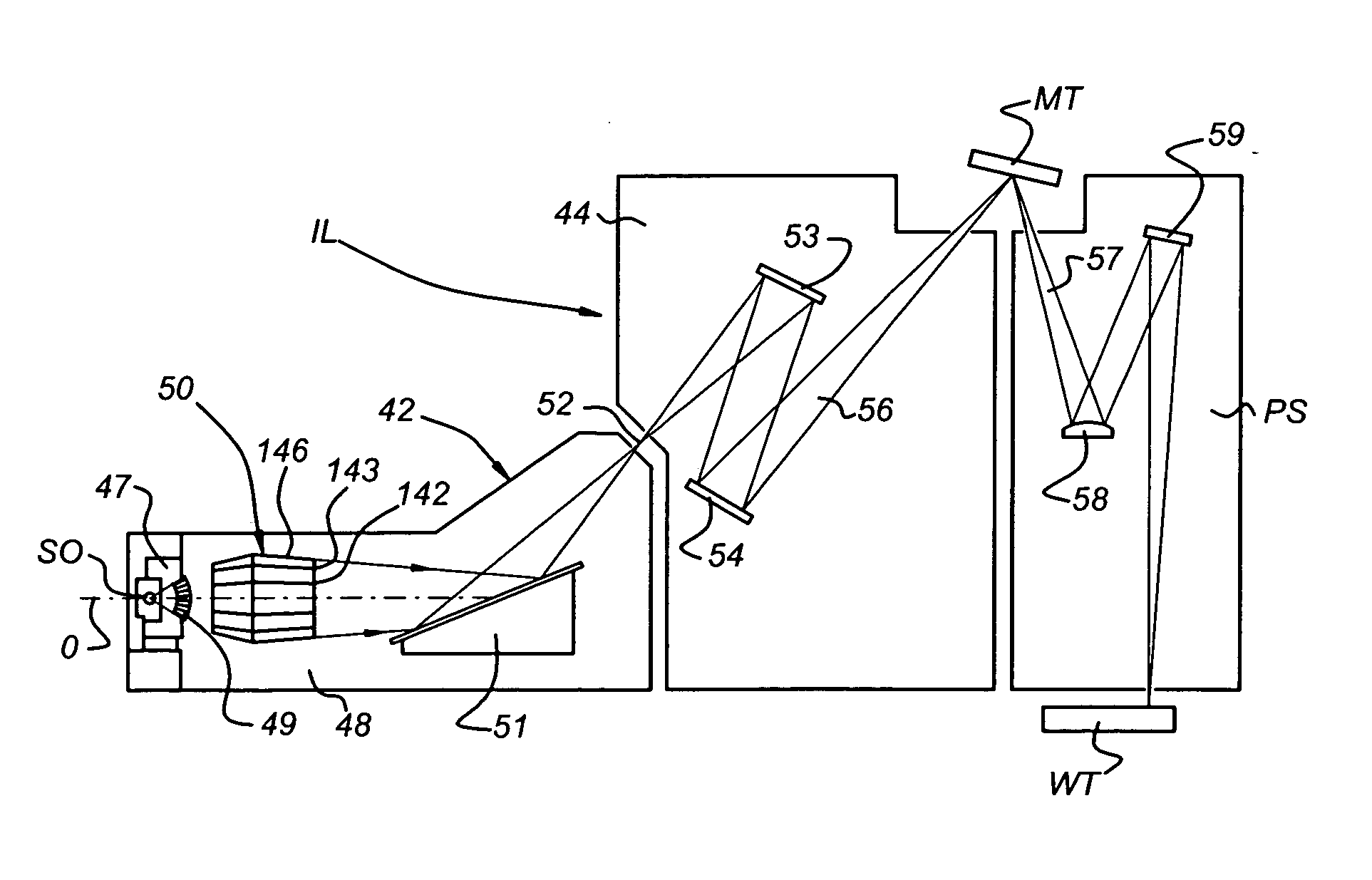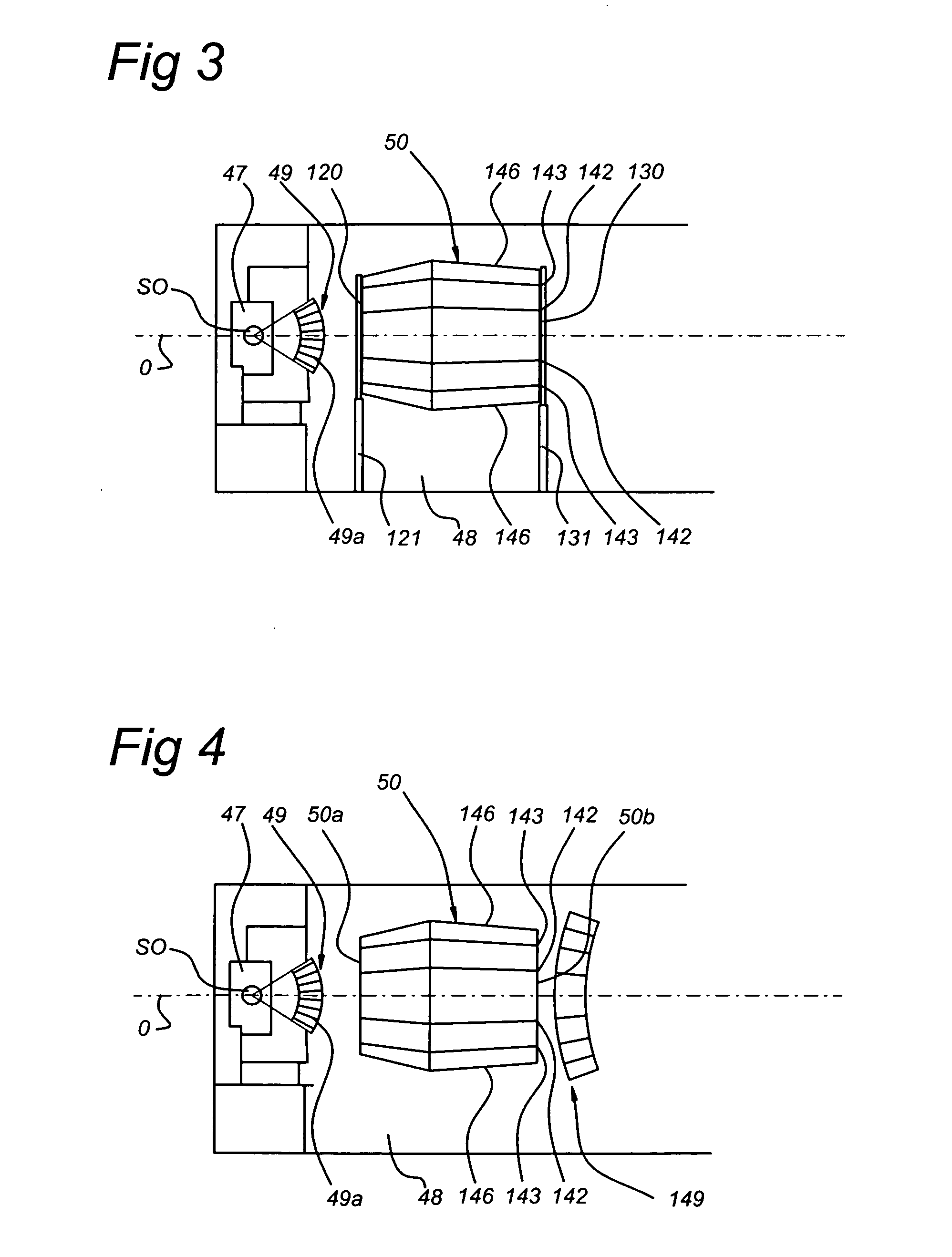Method for removal of deposition on an optical element, lithographic apparatus, device manufacturing method, and device manufactured thereby
a technology of optical elements and manufacturing methods, applied in the field of methods for removing deposition on optical elements, lithographic apparatus, device manufacturing methods, and devices manufactured thereby, can solve the problems of sputtering effect being particularly problematic for radiation collectors, other mirrors in the system are generally damaged to a lesser degree, and particles can damage collector and condenser mirrors
- Summary
- Abstract
- Description
- Claims
- Application Information
AI Technical Summary
Benefits of technology
Problems solved by technology
Method used
Image
Examples
first embodiment
[0055] In a first embodiment, the following processes are performed: cleaning with atomic hydrogen to reduce Snx (and / or other oxide deposition, for example silicon oxides, on radiation collector 50) to Sn (and / or other elemental or metallic compounds, respectively, for example Si); cleaning with a halogen, for example I2, to remove Sn (and / or other elemental compounds, for example. Si) in the form of halogenides, for example iodides (and / or other halogenides, for example SiI4).
[0056] This may be performed by a method including, during or after use of the apparatus, removing at least part of the deposition from the radiation collector in a removal process including providing a H2 containing gas in at least part of the apparatus; producing hydrogen radicals from H2 from the H2 containing gas; bringing the radiation collector with the deposition into contact with at least part of the hydrogen radicals and reducing at least part of the deposition; providing a halogen containing gas in ...
second embodiment
[0057] In a second embodiment, the hydrogen containing gas also includes halogen gas, such that these two processes as described above are performed substantially simultaneously.
[0058] This may be performed by a method including, during or after use of the apparatus, removing at least part of the deposition from the radiation collector in a removal process including providing a H2 and a halogen containing gas in at least part of the apparatus; producing hydrogen radicals from H2 from the H2 containing gas; and bringing the radiation collector with the deposition into contact with at least part of the hydrogen radicals and the halogens in the gas and removing at least part of the deposition.
third embodiment
[0059] In a third embodiment, cleaning is only performed with atomic hydrogen to reduce and volatilize tin oxides (and / or other oxide deposition, for example silicon oxides, on radiation collector 50) to volatile tin hydrides (and / o other hydrides, for example silicon hydride, germanium hydride, etc.).
[0060] This may be performed by a method as described in U.S. patent application Ser. No. 10 / 956,344, including, during or after use of the apparatus, removing at least part of the deposition from the radiation collector in a removal process including providing a H2 containing gas in at least part of the apparatus; producing hydrogen radicals from H2 from the H2 containing gas; and bringing the radiation collector with the deposition into contact with at least part of the hydrogen radicals and removing at least part of the deposition.
PUM
 Login to View More
Login to View More Abstract
Description
Claims
Application Information
 Login to View More
Login to View More - R&D
- Intellectual Property
- Life Sciences
- Materials
- Tech Scout
- Unparalleled Data Quality
- Higher Quality Content
- 60% Fewer Hallucinations
Browse by: Latest US Patents, China's latest patents, Technical Efficacy Thesaurus, Application Domain, Technology Topic, Popular Technical Reports.
© 2025 PatSnap. All rights reserved.Legal|Privacy policy|Modern Slavery Act Transparency Statement|Sitemap|About US| Contact US: help@patsnap.com



